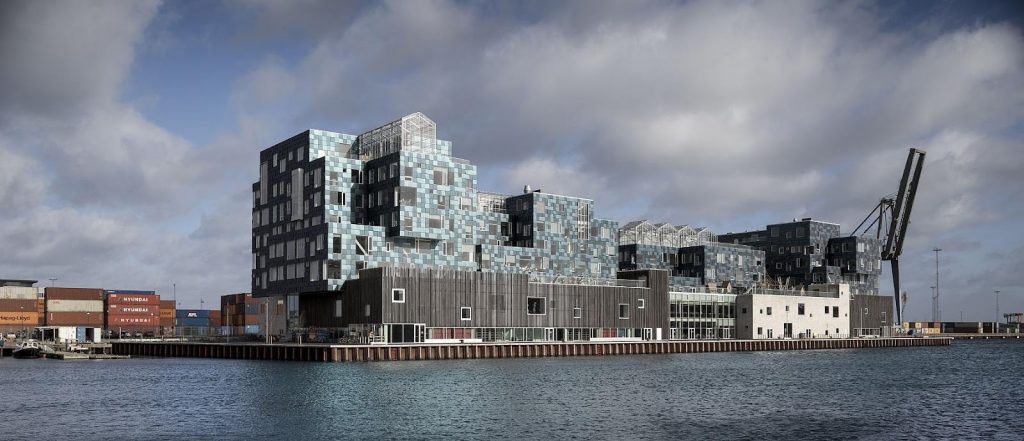In the last few years climate demonstrations have often adopted the strategy of school strikes. The core message is clear: young people want a sustainable future and they are willing to fight for it. However, school strikes also served as a protest against educational systems all over the world, which are often aloof from reality and incapable of addressing climate-related issues. The task of creating a nurturing and empowering setting for new generations to equip themselves for tomorrow’s challenges became a prominent concern.
Copenhagen International School
Many attempted to meet the goal of sustainable education or “quality education” – as defined by the United Nations’ SDGs – with Copenhagen International School being among the notable examples.
Designed by C.F. Møller Architects, the CIS’ campus is both environmentally and socially sustainable. The building stands on the waterfront in Copenhagen’s Nordhavn district. Each section is designed to meet the needs of different development stages as the school accommodates students from early childhood to secondary school.
Classrooms are both spacious and well-lit, as a result of high ceilings and their position at the building’s corners. Natural materials were employed for interior designing: bamboo bookshelves, oiled oakwood floors, wool sofas. Teachers can manage LED-based lighting to adapt both the intensity and the colour. Furthermore, interactive smartboards are available to allow for more inspiring and engaging lectures. In the longer term school’s toilets will be flushed with recirculated water. As for the energy supply, 12,000 solar panels compose the facade thereby satisfying more than half of the school’s annual electricity consumption. Angled panels create a sequin-like effect and they cover a total area of 6,048 square meters. Such a design makes Copenhagen International School the largest building-integrated solar power plant in the country.
Quality of education
Copenhagen International School was founded in 1963 in order to help Denmark students to get accepted by prestigious American universities. Nowadays it hosts students from more than 80 countries, providing a multicultural and international atmosphere.
Inspired by the goal of “quality education,” the school places creativity among its core values. This commitment translates into the provision of a wide range of activities such as art classes, language programs – specifically the opportunity for international elementary school students to remain fluent in their native language – music lessons, sports programs, and so on. Moreover, the school encourages students to active participation. In order to achieve this, there are several clubs and committees as the Green Committee, the Gender and Sexuality Alliance, and the Racial and Social Justice Union.
The power of sustainable architecture
Brit van Ooijen, chairman of the school, highlighted how the architectural environment can heavily affect the development of young people. The building provides students with both sporting and performance facilities, libraries, plant-based canteens, green areas and so on.
Several studies try to explaining how school architectural design factors influences to students’ achievements. Despite the goal of innovating study programs and didactic approaches, only few institutions address the issue of outdated and shabby school buildings. This is one of the reasons why the European Commission referred to the CIS as an example to follow in merging physical and social sustainability.



